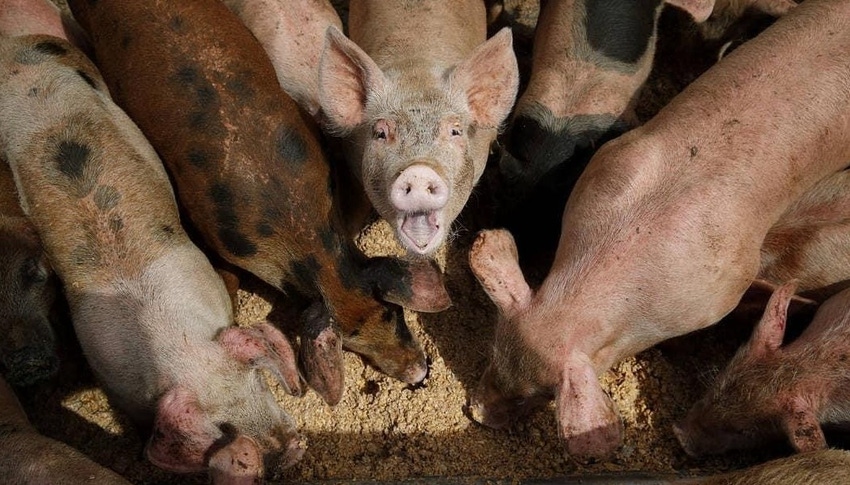
In a prime example of ultimate recycling, some pigs were eating better than people in Las Vegas -- at least pre-COVID-19.
Las Vegas Livestock, a feed-to-finish operation, used tons of food scraps generated from Vegas Strip casinos to feed their animal population and that included leftover steak and lobster – and sometimes dessert too.
Up to 400 tons of food scraps were produced daily on the Strip and porkers chowed down on upwards of 30 tons of that mixture per day compliments of places like Bellagio, Luxor, Palace Station, The Venetian, and others. In fact, the Las Vegas Sands and MGM Resorts were named by the Environmental Protection Agency as a “Food Loss and Waste Champion.”
MGM, as the largest employer and owner of the most casino resorts on the Strip, was acknowledged for its eco-sustainability plan which included elimination of food waste.
The pigs were dining high-on-the-hog until the coronavirus struck and casino gaming machines very quickly went dark. No customers equal no diners equal no leftovers -- and that was a big problem for Sarah Stallard, farm manager for Las Vegas Livestock. She had been turning those food scraps into daily boiled cuisine for as many as 5,000 pigs along with cattle, goats, sheep, and chickens.
“These animals have probably eaten more lobster in their lifetime than I have,” said Stallard, who was accustomed to seeing haul trucks show up daily with 25-35 tons of waste each day.
The slop stops
With pigs in the pen and pork production plants shutting down because of the virus, the normal processing chain came to a quick halt. “We ended up going to half capacity, then slowly reducing our numbers even further,” she said. “We definitely took a hit and didn’t want to get stuck in a scenario where we didn’t have food for the remaining pigs we had.”
Stallard relied on neighborly cooperation from warehouses and other sites that were also shutting down and getting rid of their refrigerated stockpiles. “Worst-case scenario, we knew we were in a tight spot, so we started reaching out to grocery stores and larger food producers in the area who were still supplying restaurants for takeout orders that produced some waste,” she said.
“We got large quantities of one kind of food, like expired-date crackers and lots of ice cream from one manufacturing plant, tons of it,” she said. “We had to be creative to balance things out and come up with a sustainable, nutritious, slop. Grocery store waste is usually diverse, so we’d feed it slowly so we didn’t’ overwhelm the animals with a giant sugar rush.”
Before the end of 2020, the standard 5,000 animals in pigpens had dropped to about a thousand and has now slowly grown back to about half capacity.
“Casino doors are open and lights are on again at half capacity and we’re getting some food waste from them again,” Stallard said. “Pre-coronavirus, we’d get daily food waste pickups. Now it’s more like weekly.”
Stallard said the past year has been a learning experience.
“Based on these events and their impact, we’ve had talks about where and how we will head into the future and a game plan to get us there,” she said. “Events like this definitely push your hand to respond faster than you’d like, but sometimes that’s how it goes."
About the Author(s)
You May Also Like




